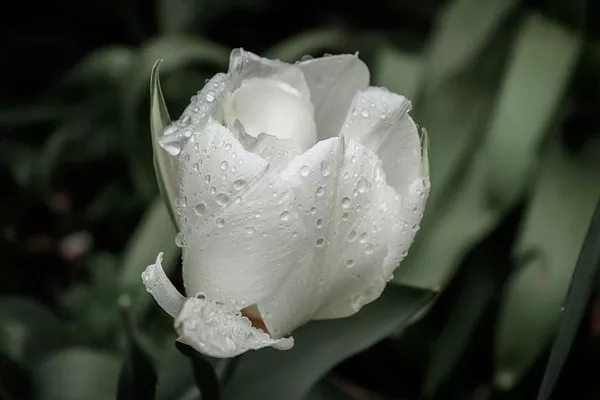As the sun’s rays intensify during the summer months, many garden enthusiasts find themselves facing a common challenge – cultivating vibrant and colorful blooms in shaded areas. While some plants thrive under the direct sunlight, others prefer the cool embrace of shade. In this guide, we will explore a selection of summer flowers that not only tolerate shade but flourish in it, bringing life and beauty to even the most shadowy corners of your garden.
Impatiens (Impatiens walleriana):
Often referred to as “Busy Lizzies,” impatiens are renowned for their ability to thrive in partial to full shade. These versatile annuals come in various colors, including shades of pink, purple, and white. Their low-maintenance nature and prolific blooming make them a popular choice for shaded gardens, where they add a burst of color without requiring direct sunlight.
Begonias (Begonia spp.):
With their unique, asymmetrical leaves and delicate flowers, begonias are a staple for shaded gardens. These plants offer a wide range of options, including tuberous, fibrous-rooted, and rhizomatous begonias. Their versatility allows for creative landscaping, and their ability to thrive in low light conditions makes them a reliable choice for summer blooms in shaded areas.
Astilbe (Astilbe spp.):
Astilbes are known for their feathery plumes of flowers that rise above fern-like foliage. These perennials are shade-loving plants that can add elegance and texture to shaded borders. With colors ranging from soft pinks to deep reds, astilbes can be a stunning addition to any garden looking for summer flowers that prefer the coolness of shade.
Hostas (Hosta spp.):
Recognized for their lush foliage and diverse leaf shapes, hostas are shade-loving perennial plants that add a touch of elegance to gardens. While hostas are not primarily grown for their flowers, their attractive foliage more than compensates for it. With various sizes and shades of green, hostas can be strategically placed to create a visually appealing and harmonious shaded garden.
Coleus (Plectranthus scutellarioides):
Coleus, with its vibrant and multicolored leaves, is a shade-loving annual that brings an artistic flair to shaded gardens. While it produces inconspicuous flowers, the main attraction is its foliage, which can showcase a range of colors, patterns, and textures. With varieties suited for both sun and shade, coleus offers flexibility in design and a pop of color in shaded spaces.
Lungwort (Pulmonaria spp.):
Lungwort is a perennial plant admired for its unique spotted leaves and early spring blooms. Thriving in partial to full shade, lungwort’s tubular flowers transition from pink to blue, creating a captivating display. Its tolerance for shade and ability to attract pollinators make it an excellent choice for those looking to enhance biodiversity in their shaded garden.
Heuchera (Heuchera spp.):
Commonly known as coral bells, heucheras are shade-loving perennials celebrated for their attractive foliage and delicate bell-shaped flowers. With a variety of leaf colors, including shades of green, purple, and silver, heucheras provide year-round interest. Their adaptability to different light conditions, including shade, makes them a valuable addition to shaded gardens.
Foxglove (Digitalis purpurea):
While foxgloves are known to tolerate some sun, they also thrive in partial shade, making them an excellent choice for gardens with dappled sunlight. The tall spikes adorned with tubular flowers in various hues add vertical interest to shaded borders. Foxgloves are biennials, but they often self-seed, ensuring a continuous presence in the garden.
Fuchsia (Fuchsia spp.):
Fuchsia plants are prized for their pendulous, tubular flowers that come in a spectrum of colors, including shades of pink, purple, and red. These shade-loving perennials prefer filtered light, making them suitable for gardens with overhead tree canopies. Fuchsias are a favorite for hanging baskets and containers, adding a touch of elegance to shaded outdoor spaces.
Ajuga (Ajuga reptans):
Ajuga, also known as bugleweed, is a ground cover plant that excels in shaded areas. With its low-growing habit and attractive foliage, ajuga is an ideal choice for underplanting trees or filling in spaces between larger perennials. In spring, ajuga produces spikes of blue, pink, or white flowers, creating a carpet of color in shaded landscapes.
See Also What Type Of Flower Is A Tulip
Conclusion:
As summer approaches, there’s no need to resign shaded areas of your garden to a lackluster existence. Embracing the unique charm of shade-tolerant flowers opens up a world of possibilities for creating a diverse and visually appealing landscape. From the vibrant blooms of impatiens and begonias to the elegant foliage of hostas and heucheras, there is a myriad of options to explore. By carefully selecting and incorporating these shade-loving plants, you can transform the dim corners of your garden into vibrant, colorful spaces that thrive during the summer months.


